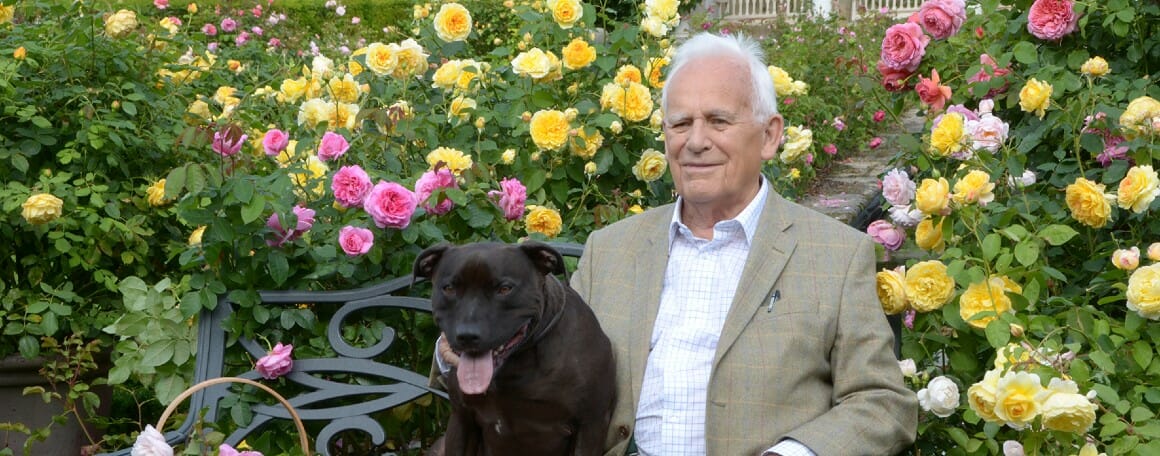
Garden Roses from All Over: An International Blend
Native to four continents and cultivated all over the world, roses are prized by many and have a long history in different cultures. We, here at Garden Roses Direct, are pleased to offer our customers exquisite garden roses grown at Alexandra Farms. Over the years Alexandra Farms has gathered an amazing selection of garden roses to grow at their farm. These roses come trailing traditions and associations from their places of origin in Europe and Asia. Here are just a few of those stories.
English Roses: Old Is New
The craze for breeding and cultivating roses exploded in the early 19th century across Europe—including England. By 1840, one English rosarium harbored more than a thousand different rose cultivars.
But the English fascination with roses goes further back. To cite just one example, a red and a white rose became the symbols of opposing factions in the 15th-century Wars of the Roses between the rival houses of Lancaster and York.
Even then the passion for roses had begun to propel them across the globe, creating the rich variety that we enjoy today. The red rose of Lancaster was a variety of Rosa gallica, a species native to continental Europe and to western Asia, while the white rose of York was probably R. alba—a rose that may have been brought to England by the ancient Romans.
In the late 19th century—even after “modern,” hybrid tea roses began to dominate in many European gardens—the fullness and fragrance of old garden roses found a champion in the famous English garden designer Gertrude Jekyll. Appreciation for vintage roses was likewise favored and promoted in the first half of the 20th century by the iconoclastic, trend-setting florist Constance Spry.
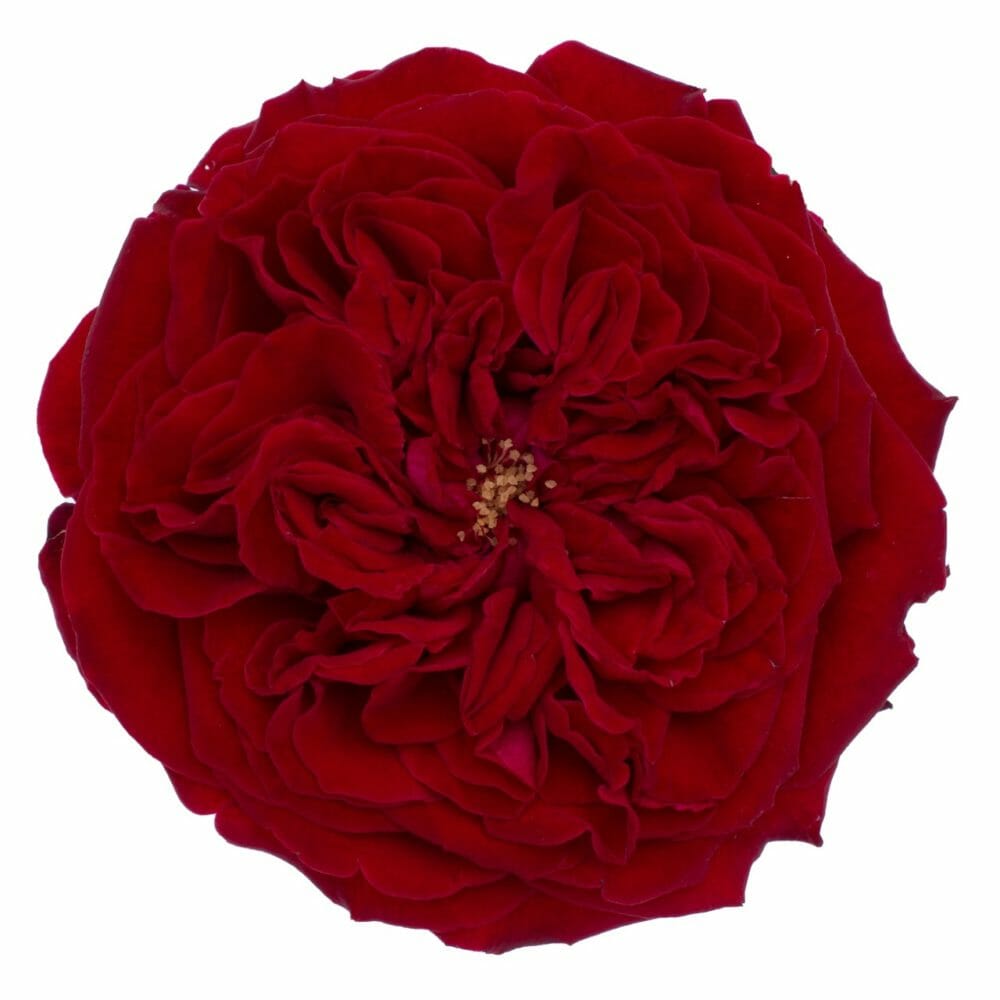
Today the David Austin collection of wedding and event roses carries the English tradition over into new varieties, bred to perform as cut flowers. One of these, Tess (Ausyacht), strongly resembles an early gallica rose, Charles de Mills: both are deep red, ruffled rosettes that open to reveal a button center. And so the past transforms into the future.
Vive la France
Among the great patrons of French garden roses was the Empress Josephine, who retired after her divorce from Napoleon Bonaparte to the elegant chateau of Malmaison, west of Paris, which boasted extensive gardens in the English style.
Josephine took a particular interest in the rose garden. Before this time, new rose varieties were the product of chance crossings; Josephine’s horticulturist, Andre Dupont, pioneered the revolutionary technique of hybridizing roses through controlled, artificial pollination.
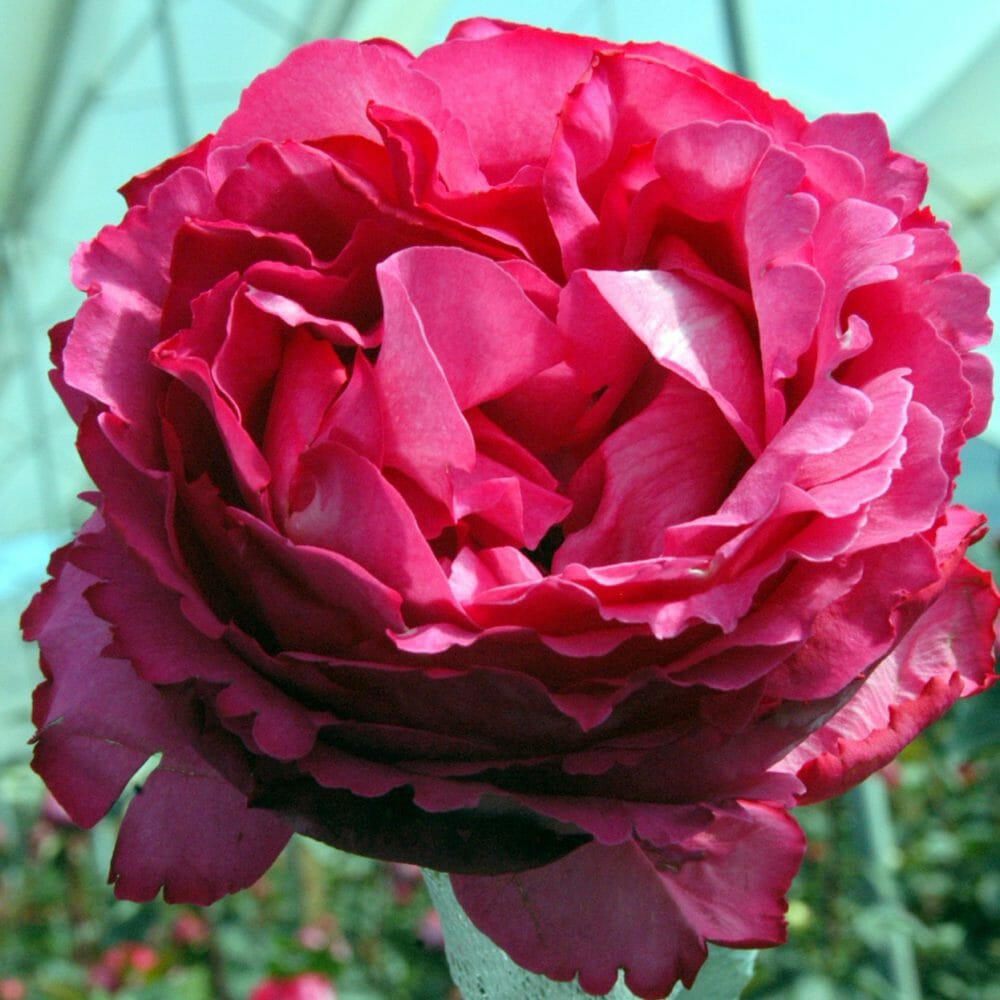
The Romanticas, created by breeder Jacques Mouchotte of the house of Meilland, are a line of voluptuous roses with entrancing fragrance. The very first in the line was the peony-like, vivid pink classic, Yves Piaget. Other French varieties in the Alexandra Farms collection include Amnesia, Sabrina and Pink O’Hara.
Dutch Treats
What gives a “garden rose” the lavish look we associate with that term today? Above all, a multitude of petals, often bursting from within a deep, rounded cup. The archetype for that look is the “cabbage” rose: Rosa x centifolia. The name means “100 petals.”
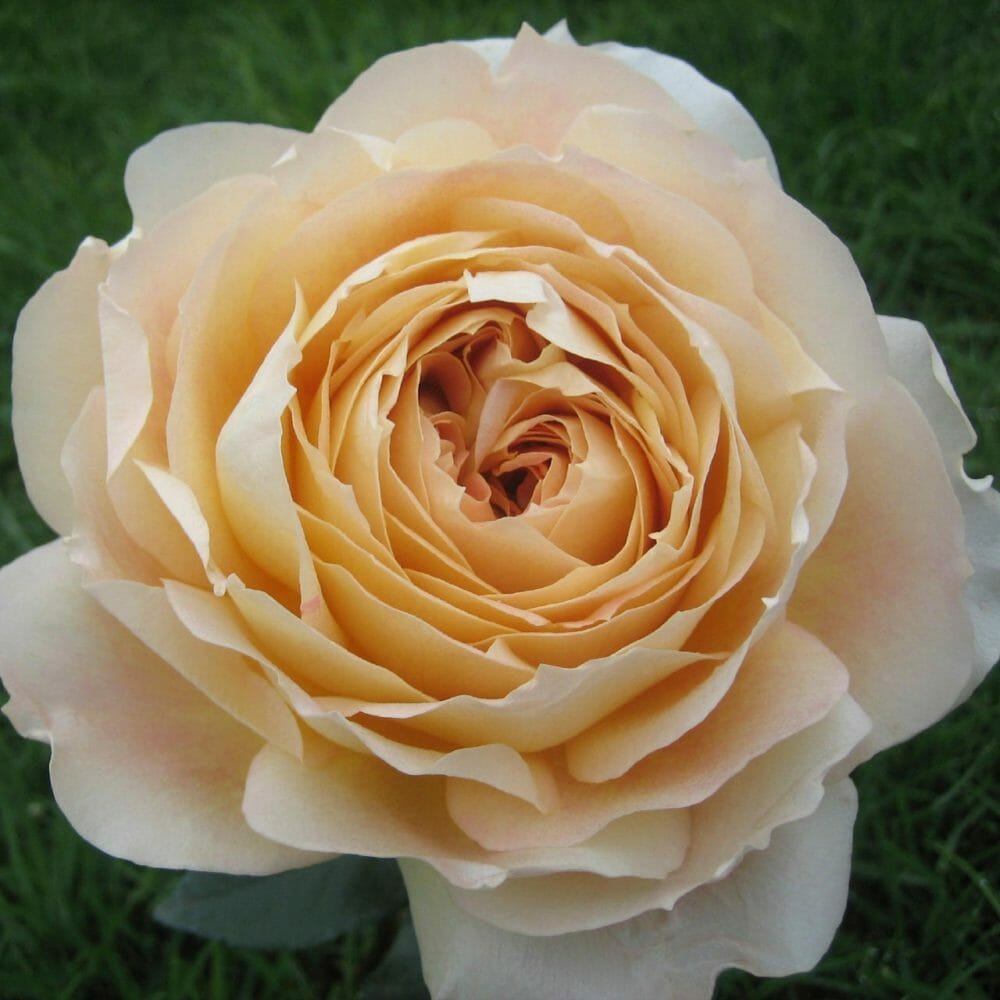
Two beautiful examples of a rose in the cabbage style from Alexandra Farms are Romantic Antike and Caramel Antike—a warm pink rose and her honey-colored sister with, literally, more than 100 petals each.
Under German Skies
Usually, the varieties grown at Alexandra Farms are carefully selected from the wide world of roses that were initially bred to grow in a garden. They are tested and cultivated using special techniques to make sure they will perform well as cut flowers.
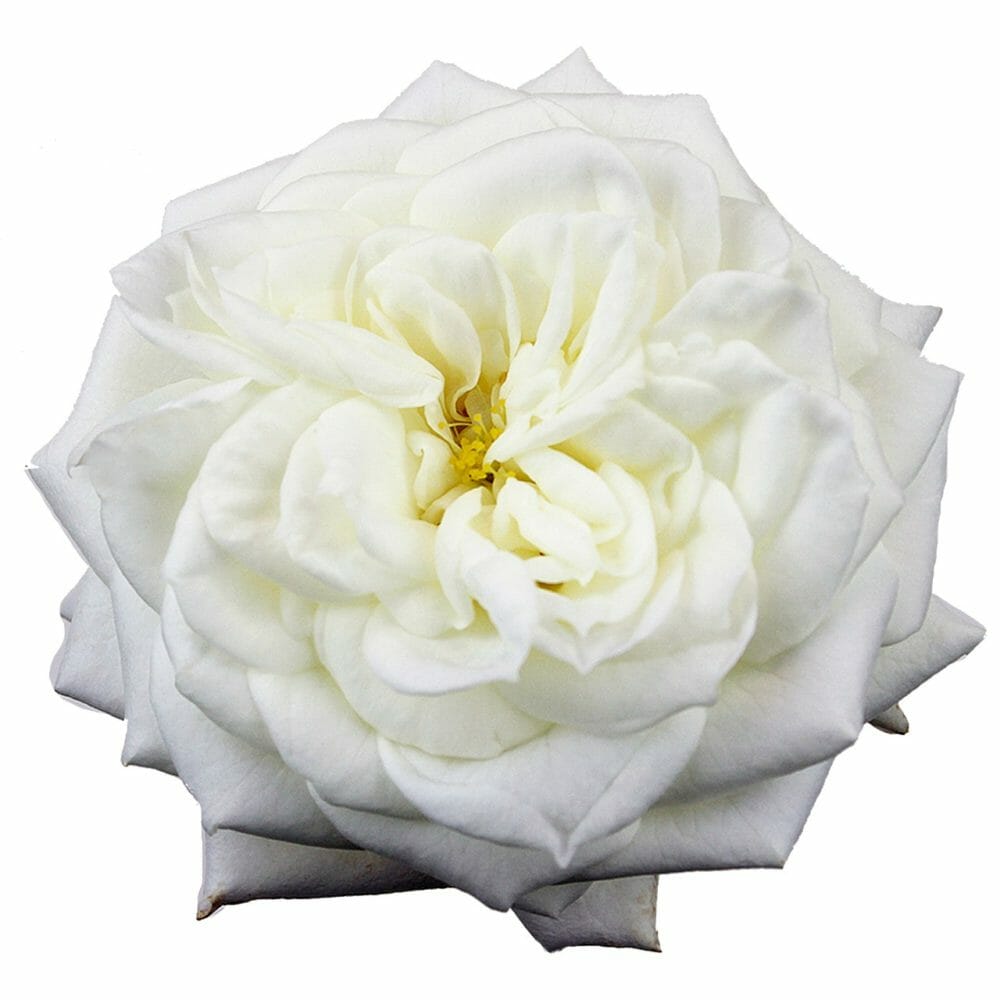
Alabaster, Ashley, Piano and Pink Piano all belong to this group. One is named for the imposing Habsburg ruler (and mother of Marie Antoinette), Mariatheresia; Baronesse is her darker sister.
The Rising Sun
Westerners may associate Japan more readily with cherry blossoms or chrysanthemums. But Japan has its native roses as well, and a robust tradition of hybridizing from the beginning of the Meiji period on.
The Japanese passion for natural beauty is well known, along with a penchant for painstaking attention to detail. In Japan, most flower farms are small, family-run affairs. It is not uncommon there that growers try to find or develop their own unique varieties, looking for a way to stand out from the crowd.
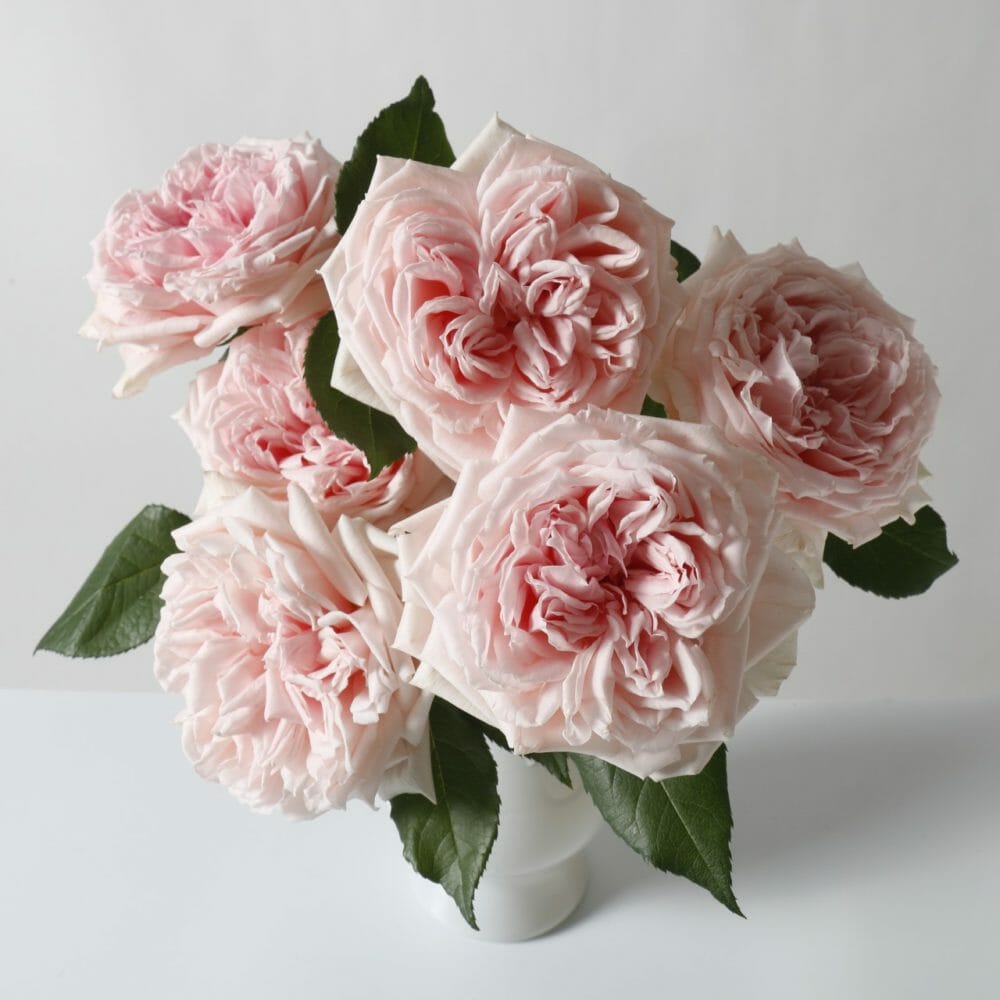
The eight-member Princess collection ranges from Princess Aiko, a bright peach with outer petals in creamy coral, to Princess Hitomi, a distinctly rosette rose with overlapping pale pink petals. Three different breeders have joined to create the collection.
The Wabara line hails from Keiji Rose Farm, on the shores of a large lake northeast of Kyoto. Created by master breeder Ken Kunieda, the line brings together new combinations of form and exquisite color.
Wabara means “harmony rose.” Launched in 2007 and released internationally in 2017, the exquisite line of new roses in the old style proves that the allure of garden roses is global—and their variety inexhaustible.
